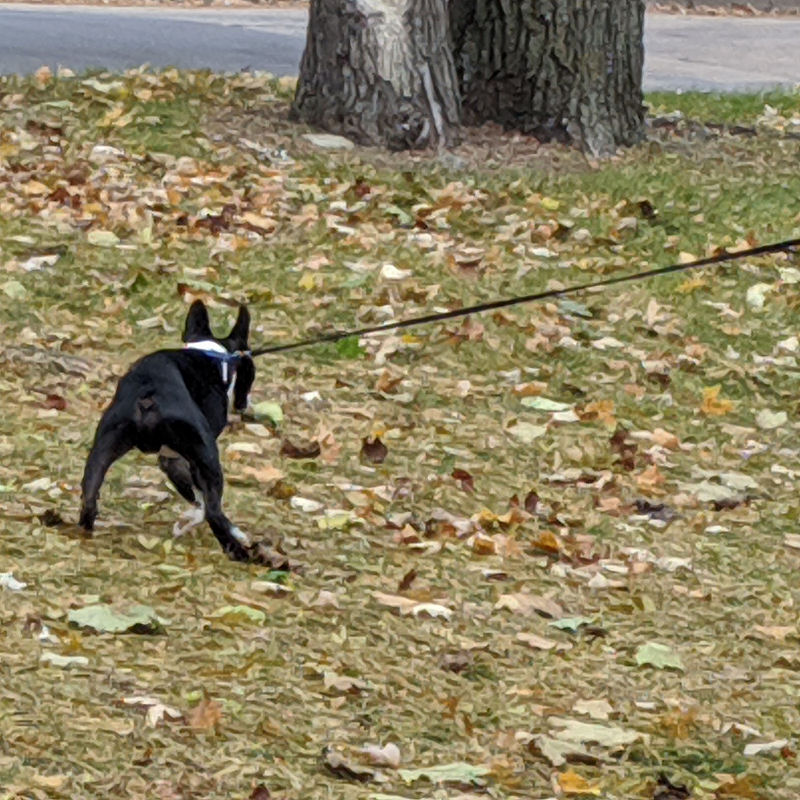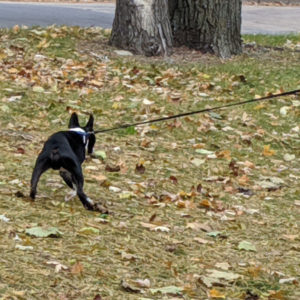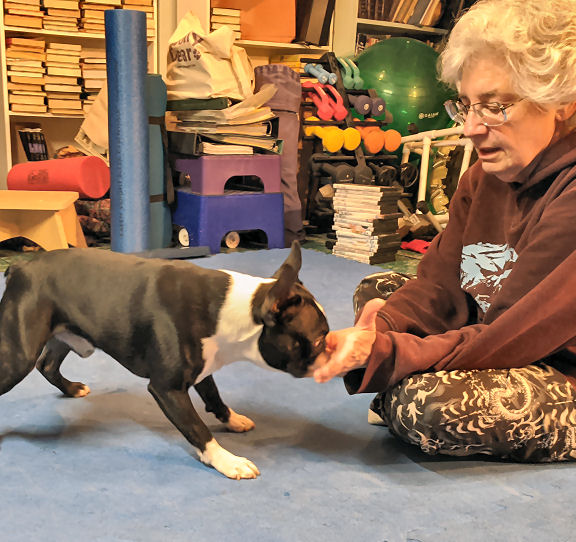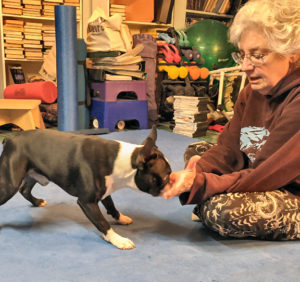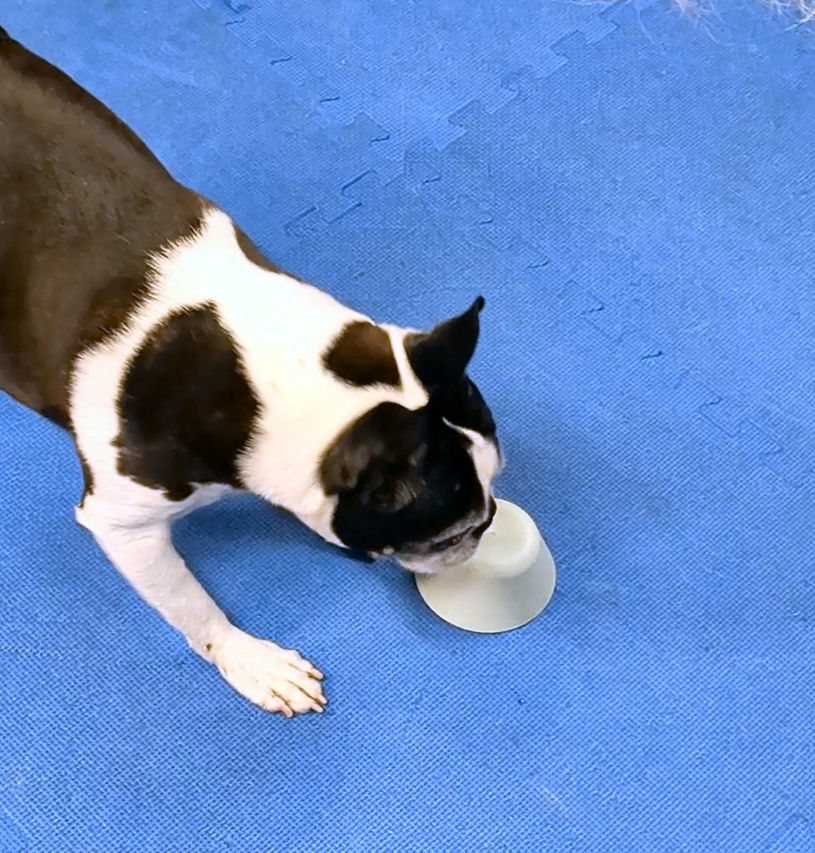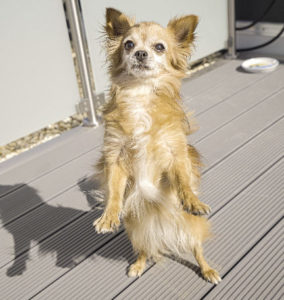Dogs love routine. Dogs love patterns. You can take advantage of this, and cure your dog’s pulling on leash, with 3-step Pattern Walking. It’s a great way to get your dog to stop pulling.
3-step Pattern Walking is easy to learn for both you and your dog. The key aspect is to be absolutely reliable in your treat delivery. Never lie to your dog. If Phydeaux hears the magic word, even if you say it accidentally, Phydeaux gets a treat.
Get started
Pick a three-word phrase you can remember easily. It can be anything you choose – it will only have meaning for you and your dog. One-Two-Three. Do-Re-Mi. A-B-C. Wa’-Cha’-Wej. Whatever you like is fine.
Get a handful of treats and start teaching your dog your pattern words. Say the third word in your sequence and give your dog a treat. Five times. Just the third word and a treat. Your dog doesn’t have to do anything. You’re just familiarizing him/her with the idea that every single time they hear that particular word, they get a treat. That’s your magic word for your dog.
It bears repeating: Every single time you say the third word in your sequence, your dog gets a treat. Even if they’re not paying attention, even if they’re howling at the moon. If they hear that word, they get a treat. A really good treat – top tier nummies.
Next step is to say the last two words in your sequence. When you say the third word, give your dog a treat. You’re teaching your dog the pattern that leads to the golden ticket – your third word. Repeat five times.
Obviously, the next part is to say all three words and give your dog a treat when you say the third word. Repeat five times.
Dogs are smart
Most dogs catch on pretty darn quick. Getting 15 treats after hearing a single word is a powerful signal that it’s a wonderful word to hear. It’s pretty amazing watching them figuring it out.
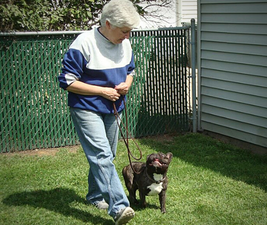
How does this turn into loose-leash walking? How does this get your dog to stop pulling? By adding movement to your three-word sequence. One step for each word, reward on the third word. Every single time.
Remember that dogs learn by the timing and placement of rewards. For Pattern Walking, that means keeping the reward close to you. If you want a traditional “heel” position, hold the reward by your left thigh.
What if your dog is ahead of you or behind you? It doesn’t matter. Keep the reward where you want your dog to be. You’re showing your dog exactly where he/she needs to be to get the treat.
Stretch it out
As your dog learns the pattern and gets better at staying close, you can stretch out the sequence. Maybe say two steps between each of the three cue words. Pay close attention to your dog’s reaction. If your dog is staying with you, add more steps. If they’re wandering off, or starting to pull, keep the sequence a little tighter.
Most dogs catch on to Pattern Walking quickly. If your dog is still pulling, stop when you say the third word and wait for your dog to come back to you to give the reward. Don’t reach to give the reward – let your dog come back into position.
Don’t ruin your word
If you run out of treats, or forget them on an outing, stop using the three-word sequence. For it to remain valuable, you have to deliver a treat every time you say the third word. Failing to deliver on the promise will lessen, or eliminate, the value of the word. Reliably delivering on the promise you make to your dog will cement the behavior you want.

